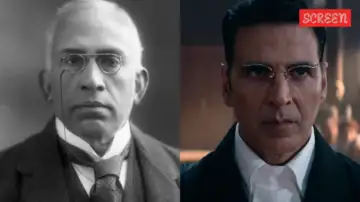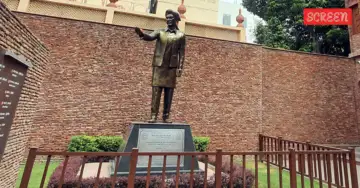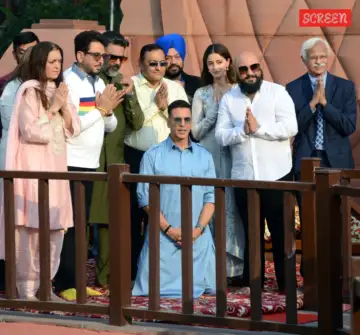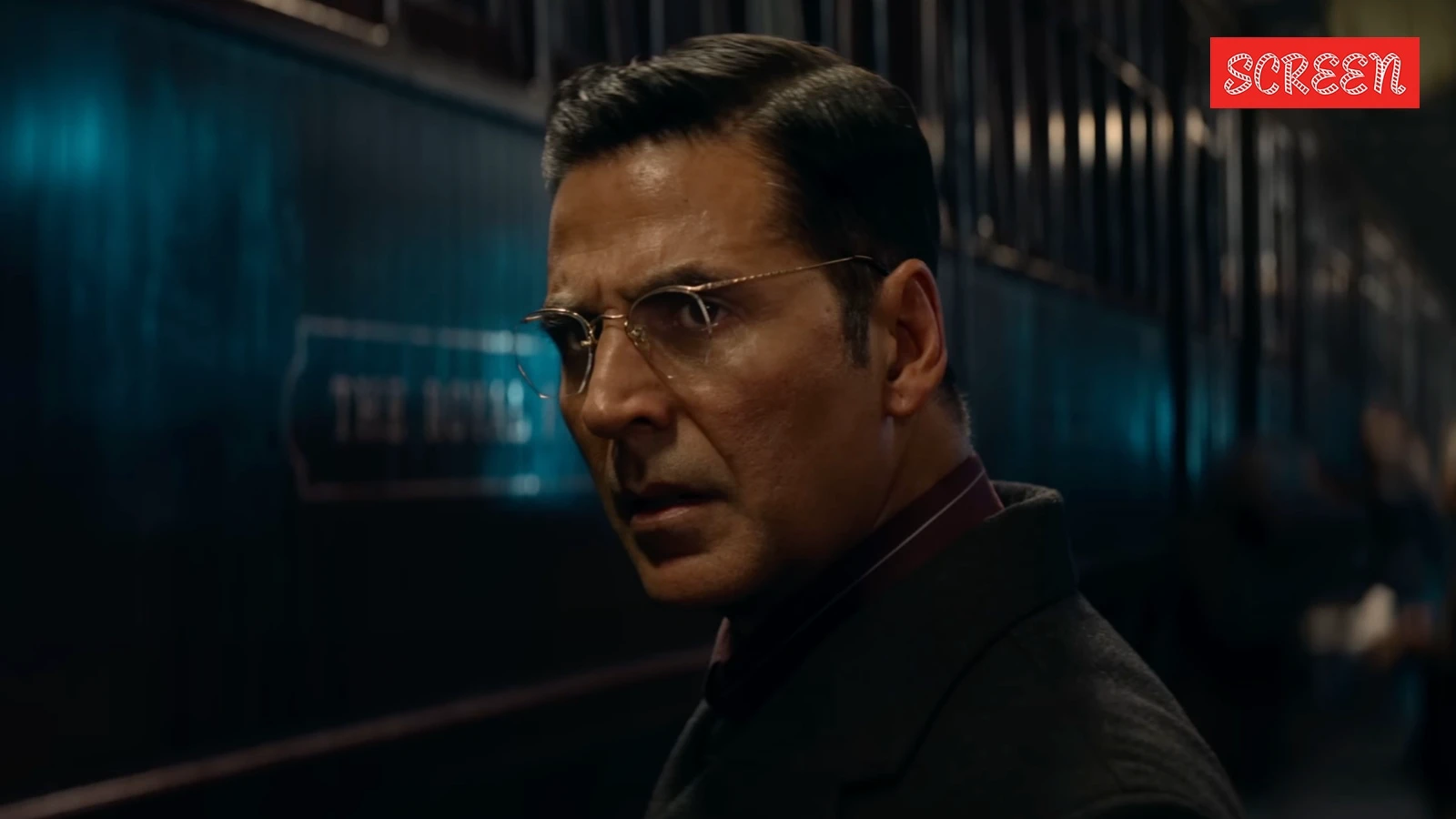Kesari Chapter 2, the film starring Akshay Kumar, directed by Karan Singh Tyagi, which released in theatres just a couple of months ago, centered its promotions on this being the “untold story” of Jallianwala Bagh that had stayed hidden for over 100 years.
The makers declared that the film was based on the events that happened after the massacre at Jallianwala Bagh, where thousands of innocent Indians died after Hitler-like General Reginald Dyerordered his troops to fire at them without any warning. The events at Jallianwala Bagh were undeniably brutal and over 100 years later, Britain is yet to apologise for them. Kesari Chapter 2 reminds the audience that this apology is due but it does something else as well, it tries to rewrite the story of Sankaran Nairand in the process, it diminishes his actual contribution to the Indian freedom struggle. Nair was a hero, and he did fight against the British but there was never a case against General Dyer in any court in Amritsar. Kesari Chapter 2 claims to be the “untold story of Jallianwala Bagh” but the fact is, that this courtroom battle never took place.
Kesari Chapter 2 claims to be based on the book written by Sankaran Nair’s third generation, Raghu Palat and Pushpa Palat, titled ‘The Case That Shook the Empire’ but upon examining this book, and the autobiography of Nair, it is evident that the acclaimed barrister was never in a trial against General Dyer but Kesari Chapter 2 tries to rewrite history as its actors and director go around claiming that history books aren’t doing a good enough job. The disclaimer that Kesari 2 is essentially a work of fiction doesn’t go far enough given the publicity material has tagged the film as ‘the untold story’.
Who was Sankaran Nair?
Sankaran Nair was a member of the Viceroy’s Council, and saw himself as an ally to the then-Viceroy of India, Lord Chelmsford. But soon after the massacre at Jallianwala Bagh,which was not appropriately reported by the press because of the severe press censorship implemented in Amritsar, Nair was shocked to find out the barbaric acts carried out by Dyer and his men. “If to govern the country, it is necessary that innocent persons should be slaughtered at Jallianwala Bagh and that any Civilian Officer may, at any time, call in the military and the two together may butcher the people as at Jallianwala Bagh, the country is not worth living in,” he wrote in his autobiography.
 As per the makers, Akshay Kumar (right) played Sankaran Nair (left) in Kesari Chapter 2.
As per the makers, Akshay Kumar (right) played Sankaran Nair (left) in Kesari Chapter 2.
Nair expected Lord Chelmsford to criticise this episode but when he saw that no one in the British administration was willing to speak against the brutal massacre, he resigned from his position in the Viceroy’s Council. His resignation shocked the British administration as prior to this, they saw Nair as a loyal ally. After his resignation, Lieutenant Governor of Punjab, Michael O’Dwyer, immediately revoked orders for press censorship in the state and martial law was called off. It was Nair’s resignation that led to the formation of the Hunter Commission, which looked into the barbaric acts at the Jallianwala Bagh.
The Hunter Commission was a seven-member committee composed of four British and three Indians that conducted interviews all over India, met with eyewitnesses of the massacre and also interviewed General Dyer. As per The Case That Shook the Empire, Dyer accepted that he “planned the shooting at Jallianwala Bagh in advance” and he had no intentions of scattering the crowd because they were violating the curfew. “More damning was his admission that he would have used machine guns and armoured cars if it had been possible,” it read. Dyer also confessed that he made the conscious choice to leave the wounded to die. This was the only time when Dyer was made to appear in front of a body that was investigating the massacre, and here, he shamelessly admitted his dastardly acts.
 The walls at Jallianwala Bagh still carry the marks of the bullets that were shot here in 1919. (Express photo by Jaipal Singh)
The walls at Jallianwala Bagh still carry the marks of the bullets that were shot here in 1919. (Express photo by Jaipal Singh)
Kesari Chapter 2 would have you believe that Dyer was made to stand in court while a former ally to the crown, Nair, badgered him with questions, but this never happened. Hunter Commission submitted its findings and declared that Dyer’s actions were a “grave error.” The crown did not wish to punish Dyer as it was seen that he had “averted another mutiny” and so, he wasn’t court-martialled or dismissed. But, they could not have him in India due to the growing resistance against him, and so, he was shipped off to England in April 1920.
If not Dyer, who faced a trial?
While Reginald Dyer was the man on ground in Jallianwala Bagh, his superior was Michael O’Dwyer, who was the Lieutenant Governor of Punjab at the time. It was O’Dwyer who gave Dyer enough power that he could implement whatever laws he saw fit. At one point, Dyer ordered people to crawl through the streets of Amritsar, and he was empowered to do so by O’Dwyer.
The events at Jallianwala Bagh shocked those Indians who, until then, enjoyed British aristocracy and had received knighthood from them. Rabindranth Tagore gave up his knighthood and Nair left his job with the crown and started working as the Diwan of Indore, which was a princely state then. It was here, in 1922, that he wrote a book titled Gandhi and Anarchy. Nair “did not believe that non-violence, non-cooperation and civil disobedience was the way for India to achieve Home Rule” and he expressed the same in his book. Here, Nair also implied that Michael O’Dwyer was just as responsible as Reginald Dyer for the massacre in Punjab. “Nair implied the Punjab atrocities were committed with O’Dwyer’s full knowledge and approval,” the book read. When O’Dwyer got his hands on this book in England, he decided to sue Nair for defamation, as he had claimed innocence for the atrocities in Punjab. Sardar Udham Singh eventually assassinated Michael O’Dwyer in 1940. But in Kesari Chapter 2, O’Dwyer is reduced to a supporting character who can be seen making backroom deals but is nowhere on Nair’s radar.
 Shahid Udham Singh’s statue at Jallianwala Bagh. Udham Singh assassinated Michael O’Dwyer in 1940 in London. (Express photo by Rana Simranjit Singh)
Shahid Udham Singh’s statue at Jallianwala Bagh. Udham Singh assassinated Michael O’Dwyer in 1940 in London. (Express photo by Rana Simranjit Singh)
The real-life trial – O’Dwyer vs Nair, and no Dyer in attendance
The real-life case was no less than a movie, even though the filmmakers chose not to make a movie on this. O’Dwyer claimed innocence and was ‘offended’ with Nair’s accusations. He demanded that Nair withdraw his book, offer him an apology and damages worth £1,000. Nair, obviously, refused to bow down and was ready to go to trial.
He weighed his pros and cons before making this decision. The biggest pro here was that the trial would be held in London, and the press would be covering it. With this, Nair had the opportunity of talking about the massacre at Jallianwala Bagh in front of the English press, and this was the only way the higher-ups in the British government and the locals of the country would get to know how Britain was treating its subjects in India. But, there were some major cons as well. The trial would be presided by an English judge and the judgment would be made by an English jury, and chances were, that they would support O’Dwyer because he was one of them. Nair also did not have the opportunity of presenting his witnesses in person, and would only get a chance to read out their testimony, that could be misinterpreted by foreigners. All of his disadvantages would be advantageous for O’Dwyer but he decided to fight this battle anyway.
Even though the trial was was held in England, Dyer did not attend a day in court on account of his ill health so Nair never really confronted him in any court, which is the base of Kesari Chapter 2.
 Kesari 2’s version of Sankaran Nair, played by Akshay Kumar, is arguing at his own trial against Reginald Dyer.
Kesari 2’s version of Sankaran Nair, played by Akshay Kumar, is arguing at his own trial against Reginald Dyer.
Nair went through many troubles while preparing for this trial. The first barrister he hired to represent him was promoted to Attorney General, so he quit. The second barrister he hired quit just a day prior. And so, in desperate times, he had to hire Sir Walter Schwabe, a former Chief Justice of the Madras High Court. Schwabe was a learned man but wasn’t a trial lawyer, and thus, wasn’t cut out for such court battles. In the book written by his grandson, it is questioned why Nair didn’t represent himself, but there is no explanation provided for the same. “It is unclear as to why Nair did not choose to defend himself when Simon withdrew. He would have certainly acquitted himself better than Schwabe who was not as experienced, strong or as knowledgeable about the case,” it read.
Sankaran Nair’s tragic loss at the trial
Nair vs O’Dwyer began in April 30, 1924, almost five years after Jallianwala Bagh massacre and the case went on for nearly five and a half weeks, presided by Justice Henry McCardie. Nair’s case was about O’Dwyer being aware of Dyer’s actions in Amritsar but after the opening remarks, McCardie, who had blind faith in the British Empire and considered himself to be superior, turned it into an evaluation of Dyer’s actions, as he repeatedly insisted that Dyer had to shoot at people to avoid a mutiny. The case was no longer about O’Dwyer’s involvement but about justifying the barbaric acts of Dyer in the name of saving the Empire. McCardie was supposed to be an impartial judge, but he acted like he was a lawyer for O’Dwyer.
Together, they painted a picture where they made the jury believe that Amritsar was in a volatile state when the events at Jallianwala Bagh happened only to avoid a mutiny. All the facts presented by Nair’s lawyer fell on deaf ears and they couldn’t convince the jury of the truth. But, even at the end, there was a chance that there could be a mistrial as the jury could not come to a unanimous verdict. McCardie did not want this case to go for another trial so he asked both parties if they would be comfortable with a majority vote, which means that the side getting the most votes from the jury would win the case.
By this time, Nair was tired. His grandson said in his book, “Nair was tired. The case had originally been filed in the middle of 1922. Two years had passed and, during this time, the case had entirely consumed him. He wanted it to end and to get on with his life. For Nair, it had never been about the money. He had fought this case because he had been asked to give a public apology for a claim he had made in his book – a claim he believed to be true. He had refused to apologise then and instead had chosen to fight the case in an English court. Now that an apology had not been demanded, he felt vindicated.”
The terms of the case were now modified as it was mutually decided that the one who won would get £500 plus legal fees. Nair demanded that if O’Dwyer lost, he would apologise to those he wronged in Punjab, and he agreed. However, Nair lost the case, 11-1. He was now held guilty for defaming O’Dwyer. He was asked that if he gave an apology now, the monetary compensation would be ignored but Nair was ready to pay, and firmly refused to issue an apology.
 The team of Kesari 2 didn’t talk about the actual fight that Sankaran Nair fought, but they promoted at Jallianwala Bagh in April. (Express photo by Rana Simranjit Singh)
The team of Kesari 2 didn’t talk about the actual fight that Sankaran Nair fought, but they promoted at Jallianwala Bagh in April. (Express photo by Rana Simranjit Singh)
Nair, who had spent years working with the British, was disillusioned by the British justice system after this case. He refused to go to trial again, as he was certain that the British would not let their own people down. While Nair was a vocal critic of Mahatma Gandhi, he wrote about Nair’s trial in Young India on June 12, 1924, “By accepting Sir Michael O’Dwyer’s challenge, Sir Sankaran Nair has put the British constitution and the British people on trial. They have been tried and found wanting. Even in this simple matter, a man of Sir Sankaran Nair’s proved loyalty could not get justice,” the Mahatma wrote.
Sankaran Nair is a man whose story deserves to be known by Indians all over the world for he truly fought an impossible fight and even though he wasn’t victorious, he was an important part of India’s awakening against the British.
Most real-life stories are slightly modified when they are adapted in movies, but if one changes the central conflict and the verdict, then it’s not even a real story anymore. Kesari Chapter 2 is historical fiction in the garb of an “untold story”.
